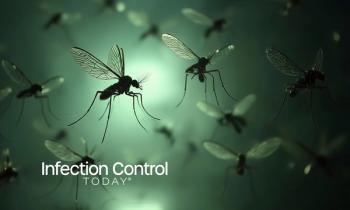
Study in Mice Suggests How Anesthesia May Fight Lung Infections
In use for more than a century, inhaled anesthetics like nitrous oxide and halothane have made modern surgery possible. Now, in experiments in mice, researchers at Johns Hopkins and elsewhere have added to evidence that certain so-called "volatile" anesthetics -- commonly used during surgeries -- may also possess powerful effects on the immune system that can combat viral and bacterial infections in the lung, including influenza and pneumonia.
A report on the experiments is published in the Sept. 1 issue of the journal Anesthesiology.
The Johns Hopkins and University of Buffalo research team built its experiments on previous research showing that children with upper viral respiratory tract infections who were exposed to the anesthetic halothane during minor surgical procedures had significantly less respiratory symptoms and a shorter duration of symptoms compared with children who did not receive halothane during surgeries.
To examine just how some inhaled anesthetic drugs affect viral and bacterial infections, Krishnan Chakravarthy, MD, PhD, a faculty member at the Johns Hopkins Institute of Nanobiotechnology and a resident physician in the department of anesthesiology and critical care medicine at Johns Hopkins University School of Medicine and Paul Knight, MD, PhD, a professor of anesthesiology at the University of Buffalo School of Medicine and Biomedical Sciences, along with others, exposed mice to both influenza virus and Streptococcus pneumoniae bacteria.
The team discovered that giving the animals volatile anesthetics, such as halothane, led to decreased bacterial burden and lung injury following infection. The researchers report that the anesthetics augmented the anti-bacterial immune response after influenza viral infection by blocking chemical signaling that involves type I interferon, a group of proteins that help regulate the activity of the immune system.
Using a combination of genetic, molecular, and knockout animal techniques, the researchers found that animals that were exposed to halothane had 450-fold less viable bacteria compared with non-halothane exposed animals with respect to the initial inoculum dose, and astoundingly, treatment made it as if the animals were never infected with a prior influenza virus.
The investigators report that symptoms of piloerection (involuntary bristling of hairs of the skin), hunched posture, impaired gait, labored breathing, lethargy, and weight loss (equal to or greater than 10 percent of body weight at the time of infection) were significantly less in mice exposed to halothane and then infected with flu and S. pneumoniae. Similar results, they say, were seen in mice bred to lack the receptor for type I interferon and not exposed to halothane before infection.
"Our study is giving us more information about how volatile anesthetics work with respect to the immune system," says Chakravarthy. "Given that these drugs are the most common anesthetics used in the operating room," there is a serious need to understand how they work and how we can use their immune effects to our advantage," he adds.
The findings, he says, suggest that volatile anesthetics may someday be helpful for combatting seasonal and pandemic influenza, particularly when there are flu vaccine shortages or limitations. "A therapy based on these inhaled drugs may help deal with new viral and bacterial strains that are resistant to conventional vaccines and treatments and could be a game changer in terms of our preparedness for future pandemics and seasonal flu outbreaks because it's focusing on host immunity," says Chakravarthy. "We hope our study opens the door to the development of new drugs and therapies that could change the infectious disease landscape."
The investigators say they are currently testing an oral small molecule immune modulator in phase 2 clinical trials that acts like volatile anesthetics to help reduce secondary infections after someone becomes sick with the flu.
This study was supported by the following National Institutes of Health grants: National Heart, Lung, and Blood Institute (HL048889), National Institute of Allergy and Infectious Diseases Extramural Activities (AI084410) and the National Institute on Deafness and other Communication Disorders (DC013554).
Source: Johns Hopkins Medicine
Newsletter
Stay prepared and protected with Infection Control Today's newsletter, delivering essential updates, best practices, and expert insights for infection preventionists.





